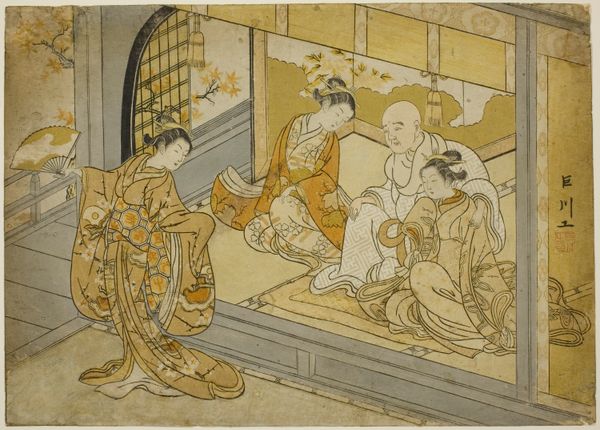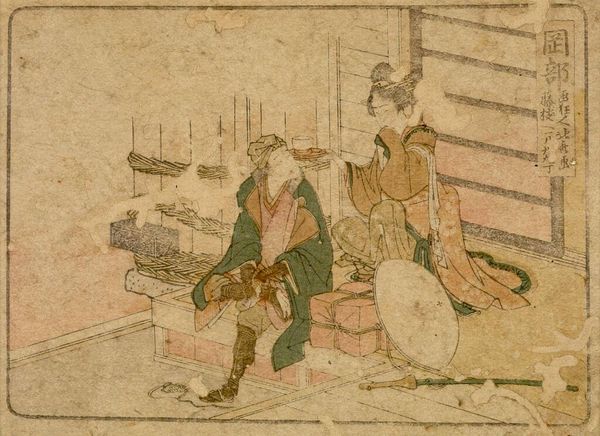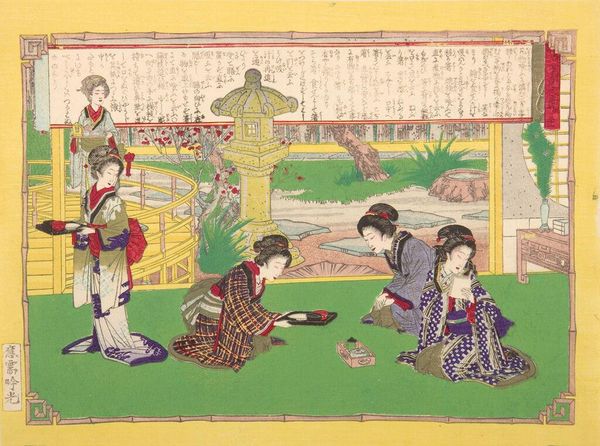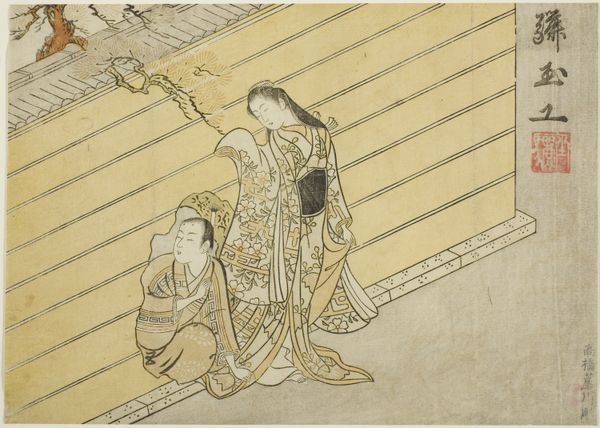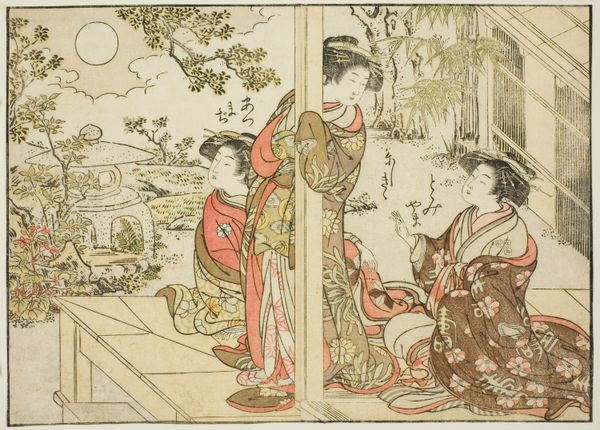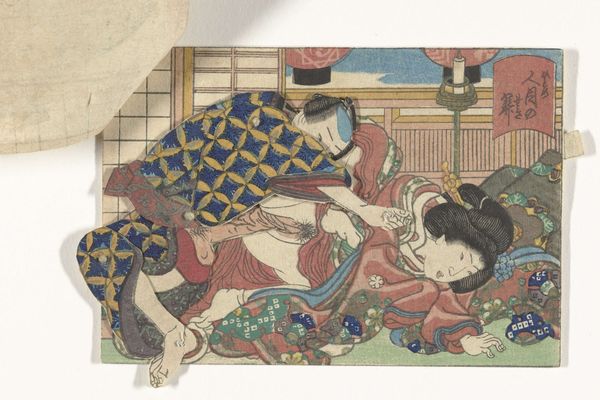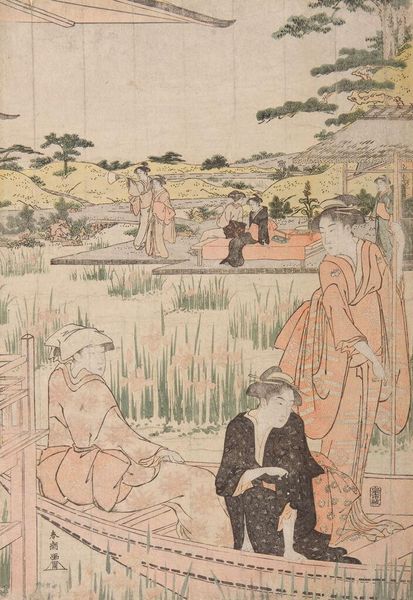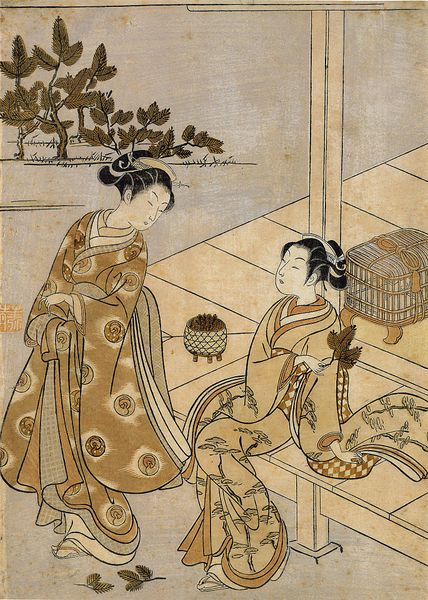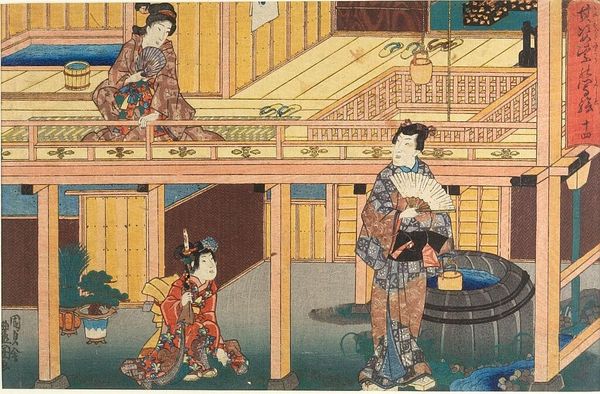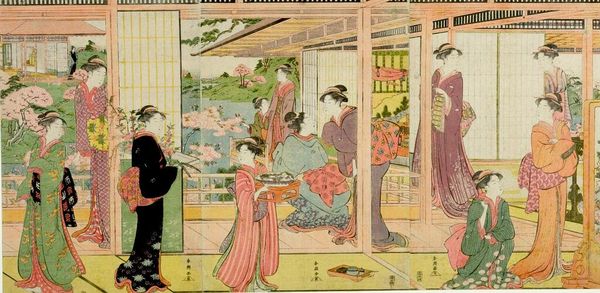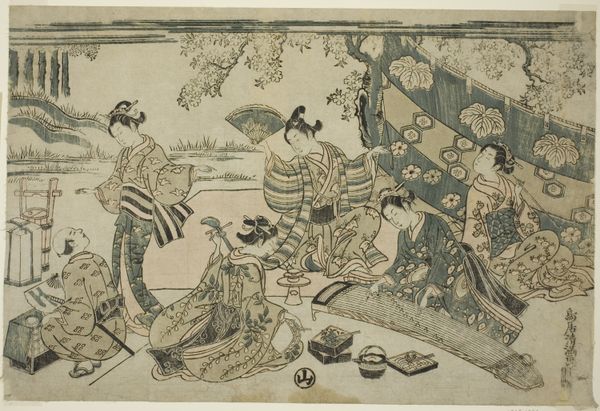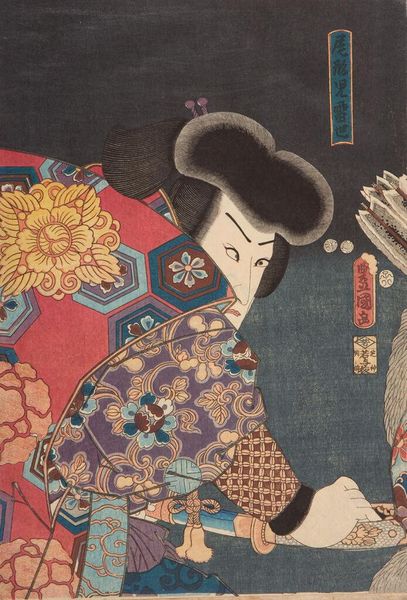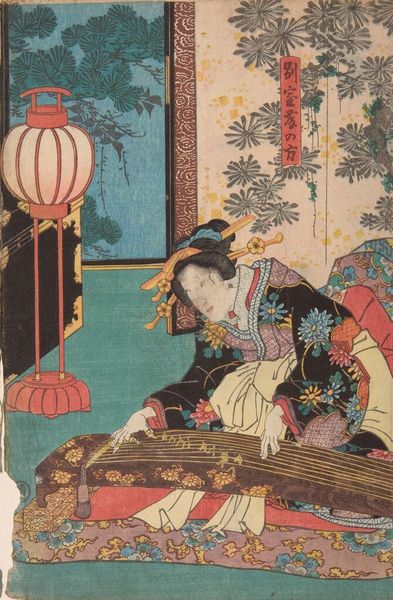
painting, watercolor
#
portrait
#
painting
#
oil painting
#
watercolor
#
portrait reference
#
orientalism
#
genre-painting
#
pre-raphaelites
#
academic-art
#
watercolor
Copyright: Public domain
Editor: This is James Tissot's "Joseph Converses With Judah, His Brother," a watercolor and gouache from 1902. The palette feels muted, almost like faded memories. I am interested in how the bodies take up a small part of the image but give the painting a quiet but deep meaning. What jumps out at you when you see this work? Curator: Well, aside from the fact that Tissot, usually known for his depictions of Parisian life, dove headfirst into illustrating the Hebrew Bible late in his career – can you imagine swapping ballgowns for biblical robes? What’s remarkable to me is the intimacy he captures here. The quiet exchange, the body language—Judah pleading, Joseph contemplative. Do you think Tissot aimed for historical accuracy, or was he more interested in something else? Editor: Maybe emotional truth over factual detail? I am drawn to Joseph’s expression. He seems both present and a million miles away. Curator: Precisely. And see how Tissot uses watercolor, traditionally seen as a delicate medium, to depict such a weighty encounter. There’s a vulnerability in the washes of color, mirroring, perhaps, the vulnerability of these brothers confronting their past. The way the light catches the fabrics suggests an almost palpable tension in the room. Doesn’t it make you wonder about the power dynamics at play? Editor: It definitely makes you consider what is not visible! I'll need to think more about the tension of using watercolour and these muted tones when trying to convey a significant and meaningful subject! Thanks. Curator: Indeed! Tissot has done much more than present just another image; he invites you into an inner psychological theatre. A story to be reflected upon for hours.
Comments
No comments
Be the first to comment and join the conversation on the ultimate creative platform.

